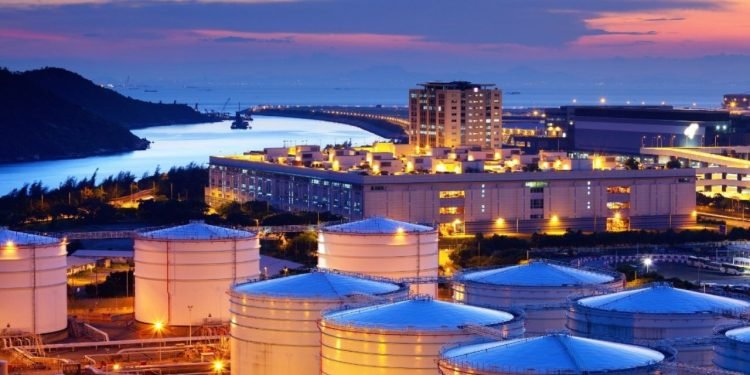Do you feel inspired to steer the oil industry in a greener direction? You’ve come to the right place.
The year is 2023, and the world is rapidly changing. With the shift to green energy, the oil industry is being forced to adapt or perish. How exactly will the industry evolve and what will it become? Now is the time to start familiarizing yourself with the oil industry before it undergoes its transformation.
Read on to find out all you need to know about the oil industry right now.
The Growing Economic Impact
As the world adapts to new sources of energy, oil companies are responding to market forces. They adjust business models accordingly. Greater numbers of people switch to electric vehicles and other renewable energy sources. With this, there is a steady need for oil in emerging markets.
Major oil companies have made investments of billions of dollars in new technologies. This includes carbon capture. This works to reduce their environmental impact. These advances have the potential to drastically reduce emissions and create a more efficient market.
The global economic implications of oil in 2023 are far-reaching, including the advancement of alternative fuels, increased energy efficiency, and the emergence of cleaner technology, among others.
All of these could result in a period of increased economic growth and stability, both for oil-producing countries and the global economy.
Innovations in Oil Exploration and Production Technologies
In the oil industry in 2023, the innovations in oil exploration and production technology have been revolutionary. Now, the possibilities for discoveries are endless. The innovation in oil exploration includes:
Subsea Production System
This type of technology is designed to tap the remaining oil reserves located in deep water and extreme temperature regions. These systems are expected to increase production rates by drilling more effectively and efficiently.
They will reduce the costs associated with the standard process through automation and the use of remote operations. Subsea production systems have the potential to reduce environmental impacts by reducing the need for petrochemical infrastructure.
These new systems are expected to have a direct impact on the oil industry’s safety measures by adopting more sustainable practices. It is projected that the movement toward subsea production systems in 2023 will leave the oil industry’s future bright, efficient, and more collaborative.
High-Reservoir-Authority Seismic Tools
These tools allow oil companies to create 3-D models of oil reservoirs. They visualize them and interpret various layers of the rock below the surface. This technology creates a cost-efficient and accurate way of identifying oil sites.
This is because technicians can now detect minuscule information. This is from the seismic signals they receive. Seismic surveys can now show the geological and chemical properties of the rocks below the surface.
This helps in assessing the likely success of a site. It can reveal the potential of a formation before condemning an oil site. The tools also enable engineers to form accurate resources estimation based on the collected data.
As a result, oil companies can plan, design and develop well-designs to extract more oil from their sites with more accuracy and speed.
Multilateral Well Systems
This is an advanced oil and gas well system that offers superior output and savings opportunities. This is compared to traditional vertical and horizontal wells. Multilateral Well Systems are capable of reaching further depths in the subsurface.
They can have multiple configurations which can be tailored to various needs or conditions. As such, they are an innovative and attractive solution for organizations. This is to maximize the efficiency of their operations in this highly competitive market.
This system has the potential to bring significant advancements to the industry in the years ahead.
Liquid Recovery in Gas Refrigeration
A refrigerant is absorbed by a liquid absorbent in the operation of gas refrigeration systems. A network of heat exchangers is used to circulate the refrigerant and absorbent combination. They go through various procedures here.
The refrigerant can be discharged as a gas. It subsequently condenses back into a liquid form thanks to these processes. Some of the refrigerants may stay in the absorbent throughout this procedure. The system’s performance and efficiency suffer as a result.
Removing the refrigerant from the absorbent so that it can be used again in the system is known as liquid recovery. The system becomes more effective as a result. It lowers the amount of refrigerant needed. This may lead to economic savings and a decrease in environmental impact.
Delve into understanding liquid recovery to better be informed along with how it might assist buyers in selecting a gas industry refrigeration system for your needs.
Governments and Pollution Regulation
Large-scale oil companies must adhere to stringent emissions restrictions when conducting business. Sweeping regulations are also required. This is to invest in cleaner energy alternatives to mitigate potential environmental and health risks posed by the burning of fossil fuels.
Governments are instituting hefty fines and penalties for companies that violate these standards. This is for those using an ever-increasing range of technologies to monitor company activity and catch any potential polluters.
All oil companies must be aware of these policies. They should be fully prepared to abide by all laws and regulations thoroughly. This is done while conducting their business operations to avoid stiff penalties and negative publicity.
Outlook for Oil Prices and Demand in the Coming Decade
In 2023, the oil industry looks to be in a state of transition. It relies on a mix of alternative energies to continue to run the economy. Several countries have committed to reducing their dependence on oil. This is while demand in some countries remains strong.
Oil prices are likely to remain volatile, with periodic sharp swings. However, despite the variability, increasing demand for oil and limited supply could keep prices high in the coming years. On the flip side, these efforts could put downward pressure on oil prices:
- Reduce the world’s energy intensity
- Improved efficiency
- Focus on renewables
This will open up a range of opportunities for investment in clean energy. This is as well as the traditional oil industry. It looks likely that oil demand will take a backseat to renewable sources, making oil prices and demand an ever-changing factor in the global economy.
Explore the Oil Industry Starting Today
This year 2023 is shaping up to be an exciting year for the oil industry. Despite the challenges of a global pandemic, technological innovations offer immense potential for efficiency and sustainability.
This is why it’s important to stay up to date with the latest news and trends. This will continue to shape the industry. Stay in the loop with relevant and timely content – and make sure to bookmark us!
Did you find this article helpful? Check out the rest of our blogs!



















